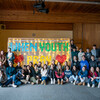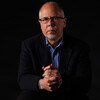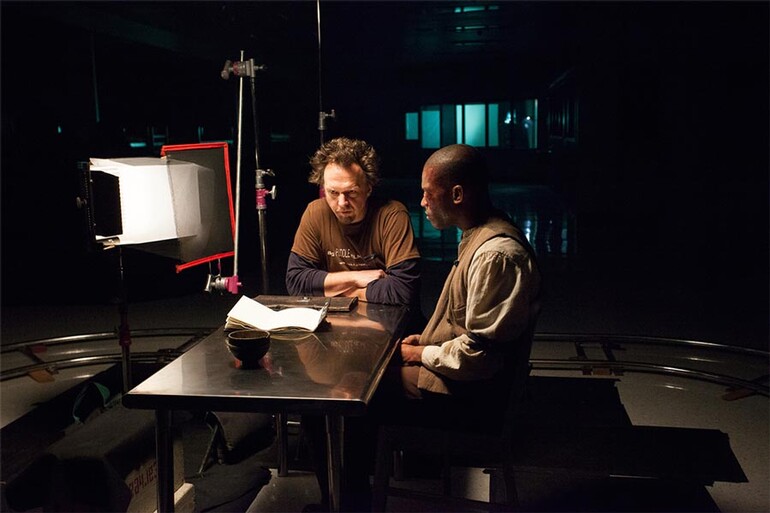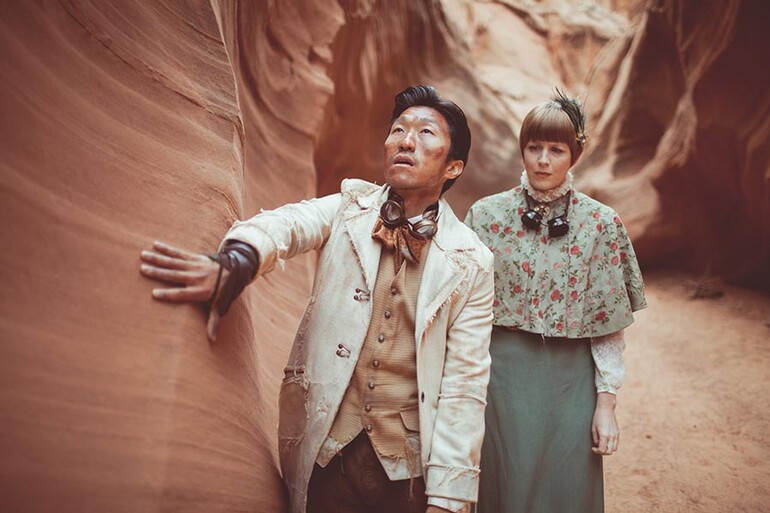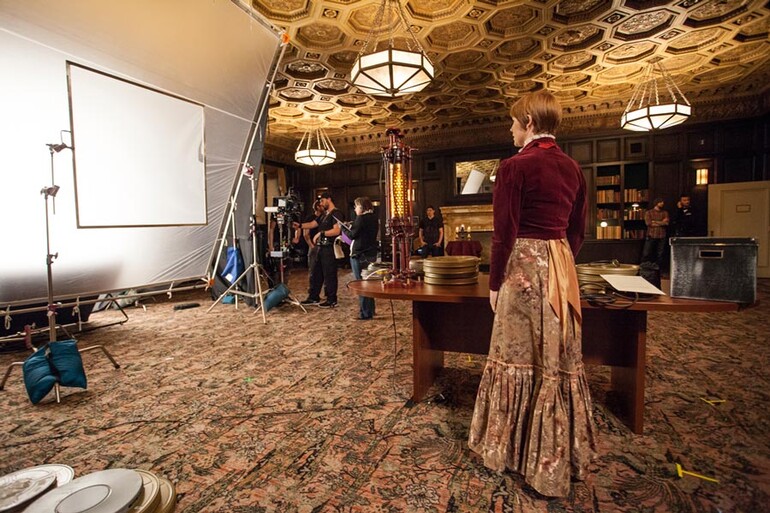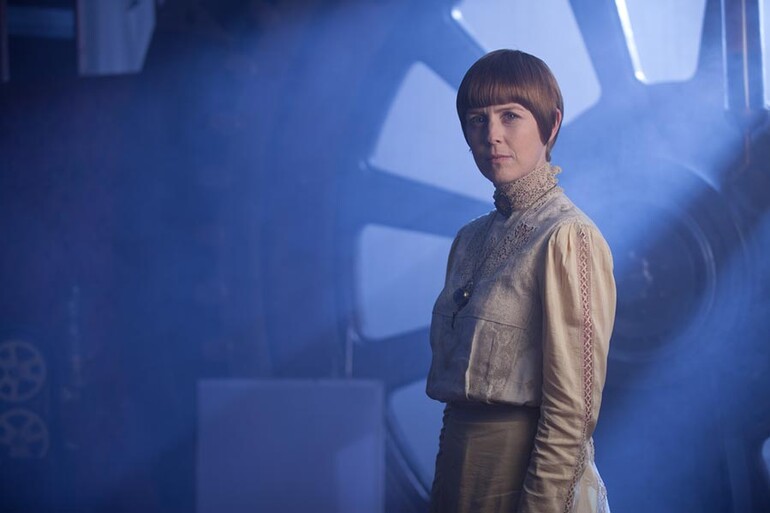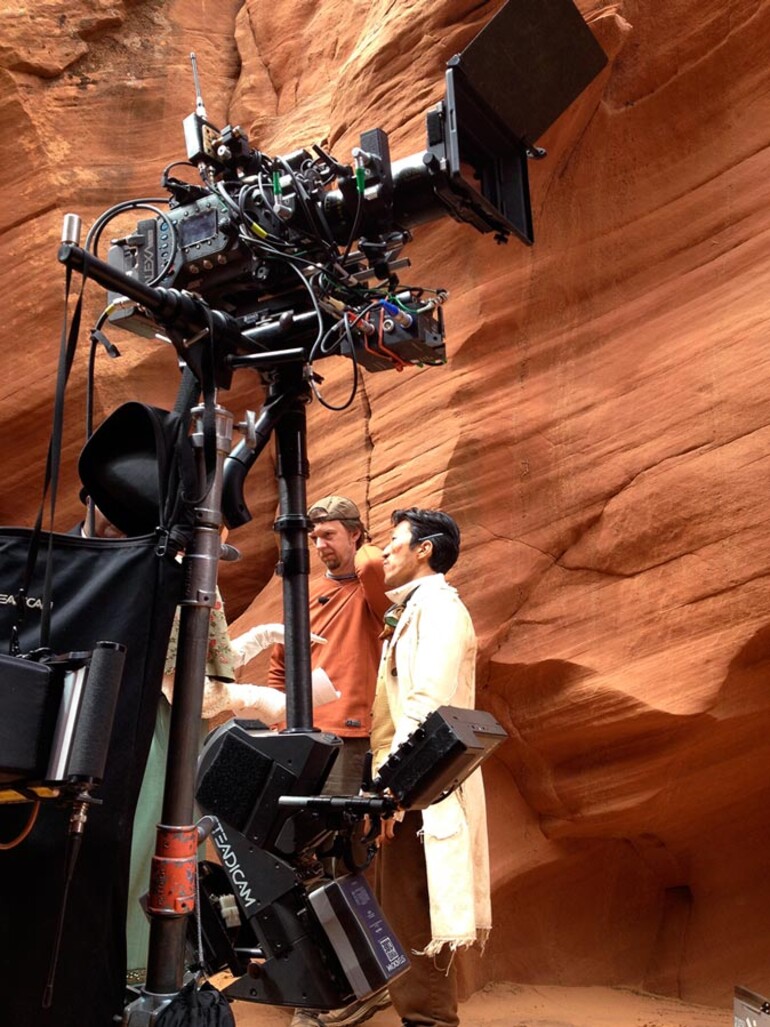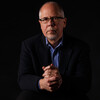The Record Keeper is a new effort to present the grand themes of The Great Controversy to a unique audience. It is a General Conference-sponsored attempt to portray the celestial battle of obedience versus apostasy, good versus evil, in a viral video series for those who live and breathe through social media such as Facebook, Twitter and YouTube. Since the series was largely produced in the Northwest, the GLEANER provides here an exclusive interview with Garrett Caldwell, General Conference associate communication director, and Jason Satterlund, Walla Walla University graduate and filmmaker, with an initial look at this first-of-its-kind Web-based project, expected online early in 2014.
GLEANER: What/who was the original catalyst for this project?
Caldwell: The original spark came December 2010 during an evangelistic strategy meeting at world church headquarters. During a specific discussion onThe Great Hope project, I remember thinking — "If someone gave me this book, what would make me want to read it?" That's when I first thought about the possibility of using a movie trailer, a short video promo, to create an interest. I knew Jason had done something like that for the Josh McDowell ministry a few years back. So I called him up.
Satterlund: When Garrett called I was excited but a bit overwhelmed with the scope of the project — just huge. How do you cram a narrative covering thousands of years into a video and do any of it justice? You run the risk of trying to tell too much of a story in too short a time. So we started talking about smaller episodes for a Web-based series.
GLEANER: How did you see this fitting into the world church outreach strategy?
Caldwell: The overall strategy of The Great Hopeproject is to encourage each member to share The Great Controversy themes with his or her friends and neighbors. But there will always be a huge number of people outside those personal circles of influence. How do you get them to read it? So we thought this could become a great conversation-starter to engage those who know nothing about Adventists or Ellen White. It would have to be accessible, something the average person on the street could approach without a theological dictionary or code book.
GLEANER: Did you test this idea out on a wider scale?
Caldwell: Definitely. That was a key step to see if this would actually be an effective tool for our already active members in sharing with their friends and contacts. We tested the concept out all around the world and got an enthusiastic response. After we showed it at one meeting in Brazil, Twitter and Facebook response registered an amazing 9,000 "likes" in less than 24 hours.
GLEANER: Was it difficult to convince world leadership to try this new approach?
Caldwell: Well, when our leaders saw that members were excited about actually using this type of social media outreach in conjunction with The Great Hopeproject, they started looking for funds. When a major donor stepped up and said, "I believe in this. I'll cover half of the cost, if you'll find the rest," the General Conference committee decided, "We've got to do this." They saw it truly had the potential to speak to an unreached audience. The project kicked off in the fall of 2012, and we've been working hard on it ever since.
Satterlund: To do this effectively, the budget was going to approach $1 million. That's pretty small, actually, for projects of this sort, but we knew it would be a pretty big chunk for our church. Even then, it would be like trying to buy a Cadillac with a Yugo budget. This was a big step for our church leaders, and I'm grateful they had the courage to give the okay.
GLEANER: So, with the "green light" to move ahead, what sort of video storytelling did you decide would best reach the "unreached" with The Great Hope?
Satterlund: We wanted to do something entirely different from what might otherwise be expected. All of us are captivated by stories that make us care about the characters, that make us want to keep reading or watching to see how things turn out. I thought — what about using a bit of imagination to let angels tell the stories that are at the core of The Great Hope? They look at the brightest light and the darkest evil every day. Their perspective would be phenomenal. We decided the war in heaven, the fall of humanity, the plan of redemption — all the thematic lines of divine/human interaction — could be told through their eyes.
Caldwell: In our experience sharing some the preliminary segments around the world, we have found that once people see the whole picture, they get it. It is still closely tied to the content and insight that comes from the Bible and the original themes of The Great Controversy. Rajeev Sigamoney, who is assistant professor of film and television production at Pacific Union College in Angwin, California, teamed with us to come up with the scripts.
GLEANER: We understand that significant portions of The Record Keeper segments were shot in the Northwest.
Satterlund: It made sense to do a major amount of the production in Portland, Oregon, where I live. I already have a number of film talent and production people in the Northwest who I am used to collaborating with on projects. So we decided to do most of the production right here. The challenge was to find a place where we could create a film set and leave it in place for a couple months. What we found was a pretty cool and ironic spot to film: the Wapato Jail facility in Northwest Portland, which has been empty since it was built in 2003. It's pretty ironic and perhaps fitting that stories of darkness and redemption should be filmed in a jail.
GLEANER: Why did you choose the unique look for the set and actors? Why was that important to the story?
Satterlund: We sort of stumbled upon this as we thought of how to present this in an imaginative but timeless manner. Our set designer, Josh Kinsey, is not only a devout Christian believer but also quite a collector of the so-called "steampunk" genre. It's sort of a Jules Verne look — classic and futuristic all at the same time with knurled knobs, gears and mechanical devices. As we looked at the content of our scripts, we thought it would be the perfect atmosphere for The Great Hope/Great Controversy story, which looks both back into the past and forward to the future.
Caldwell: People, even if they're not essentially Christian, seem to identify with the angel theme. Telling this story through the eyes of angels allowed us to be fluid in time. We felt the steampunk genre would initially engage the imagination of curious viewers in what seems to be a fantasy world but ultimately lead them to the underlying truths of the past, present and future.
GLEANER: How did the actors and crew respond to filming this unique world view of the battle between good and evil?
Satterlund: Only one of our main actors, Dennis Hill, was a Seventh-day Adventist member. The rest of our 60-plus cast and crew members represented various states of belief or unbelief. But the further we got into the project, the more I could see them engaging, becoming interested with the core of this message. The whole atmosphere of team building toward a common theme set a different tone than many of them had ever experienced. I like to think that they will associate that with the spiritual tone and truth of this amazing story. And I can hope and pray that those who view the end result online will also find the theme to be life-changing.
GLEANER: You plan to make The Record Keeper Web series public by early 2014. How should the average church member view this series as compared to the familiarGreat Controversy narrative?
Caldwell: The Great Controversy for an Adventist, and as shared in The Great Hope, is more than a book — it's a world view. We want to give people in our sphere of influence a glimpse so we can have a conversation with them, leading to an evangelistic outcome. Conversation includes both speaking and listening, so we don't view it as a short-term process from initial viewing to baptism. It will take patience and persistence. I hope members around the world will find The Record Keeper series to be an effective way to begin a discussion of eternal consequence. Evangelism is not just for "specialists" — it's for all of us. We'll be able to see metrics via social media networking. We'll be able to see how many of our young people get really excited about not just viewing it but sharing it. When we showed the pilot to a group at Johns Hopkins University, they said they are eager to use this as the core for a weekly study group. Overall, if our church collectively says, "This was a very valuable thing; we need to do it again and do it more," then I'll feel the project time and expense was worthwhile.
GLEANER: Will there be a "season two" or additional releases via broadcast or DVD?
Caldwell: The Web version fits our plan well for now. You're not restricted by time or audience — anyone can share it virally. You don't feel embarrassed if you don't have a $100 million budget. I think this stands right at the top of the heap, though, compared with other Web series I've seen. There is definitely a "season two" in the minds and hearts of the creators. The church this time around supported it, but individual lay people did too. Who will step forward the next time around? What blessed soul will be in the unique position to fund the next step in creative evangelism? I have no idea who will come forward or what the next stage will be. Will we branch beyond the Web to produce a feature film? We'll see what spiritual serendipity the Holy Spirit brings together.
GLEANER: Is it likely that some church members will be uncomfortable with this? Does this take too many liberties with The Great Controversy themes?
Caldwell: Of course. I can understand how some will conclude this is not for them — and they are right. The General Conference decided to support this project for the express purpose of reaching people beyond the borders of the church. The world at large has been desensitized to what is at stake in the battle between good and evil. This series seeks to pull back the curtain on what is behind what people see with their eyes every day. And, while this is drama, we have carefully consulted the Biblical Research Institute and the Ellen G. White Estate throughout the process to be sure the series is consistent with what we know from prophetic writings.
GLEANER: As you look back on the entire project, what excites you the most?
Satterlund: I feel we as a church have sometimes set our sights too low in using media to attract the public to our message. It's like we feel it's impossible to compete with the world, so we settle for something of lesser value. But we represent the Creator, and we ought to produce creations that are equal to or better than what the world holds up as good. I'm proud that our church allowed this effort to really soar. I hope this will be the start of more projects that connect our unique view of God's plan with those our Lord came to seek and save.
Companion Resources
New tools will include small-group discussion guides, Bible study materials and prerecorded sermon series — all designed as companion resources to The Record Keeper to lead interested viewers into a deeper understanding of God’s plan. A growing body of follow-up material will be available soon. Follow the latest developments on The Record Keeper Facebook page.
